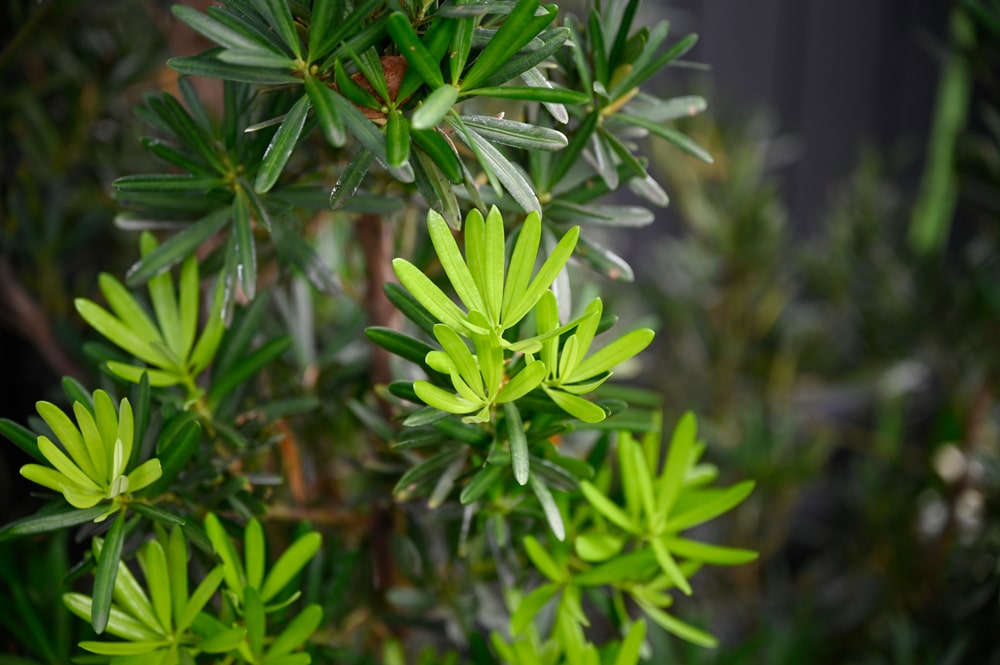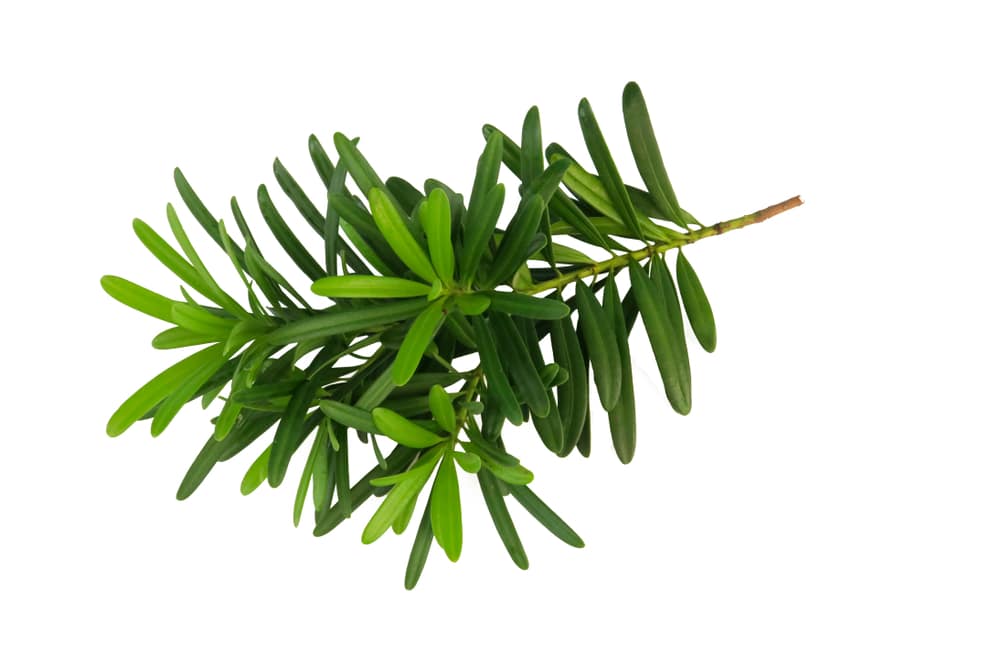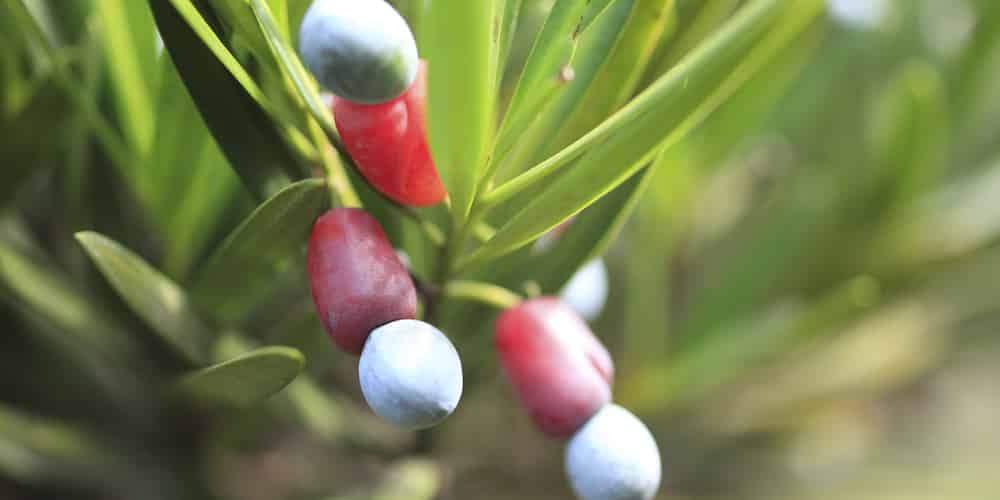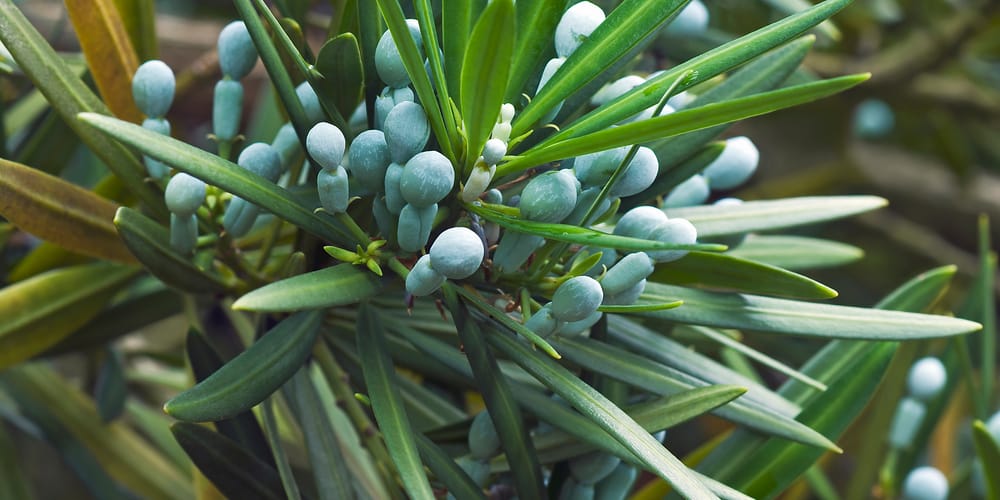Podocarpus trees are generally large plants, ranging from tiny bushes to massive trees. Though it is also known as Japanese yew, it does not belong to the yew family, although they have a few physical similarities. They are famous for being undemanding, long-lived, and tolerant of different growing conditions.
Podocarpus trees are moderate growers but can live for hundreds of years. You might have to take extra care at first, but these trees are extremely drought, salt, and cold tolerant once established. Because of these reasons, they are widely planted in gardens all around the world.

| Botanical Name | Podocarpus |
| Common Name | Podocarpus yew pine, Buddhist pine, fern pine, plum pine, yew pine, Japanese yew |
| Plant Type | Perennial |
| Flower Color | Non-flowering, produces yellow cones instead |
| Size When Mature | 360-480 Inches |
| Bloom Time | Non-Flowering |
| Sun Requirements | Full Sun to Partial Shade |
| USDA Hardiness Zones | 8 – 11 |
| Soil PH Range | 4.5-7.5 |
| Soil Type | Moist, loamy, sandy, well-draining |
| Water Needs | Low to Medium |
| Native Area | China and Japan |
What You Need to Know About Podocarpus
These trees are evergreen which means they will keep their foliage all year round. Additionally, its leaves are simple and flattened yet have a distinct linear-elliptic shape that is arranged spirally.
Podocarpus does not bloom flowers but produces berry-like cones instead in bright colors. These cones attract birds and other animals, which help in the dispersal of seeds. However, they can be toxic to other animals like dogs, cats, and horses. Be mindful if you have pets roaming around in the garden.
It is a low-maintenance tree that does not require regular pruning, except for removing any dead, diseased, or damaged branches. Alternatively, they can be pruned and shaped to form hedges, topiary, or bonsai specimens.
How to Care for Podocarpus
Here’s everything you need to know about growing and caring for a thriving Podocarpus:
Light
Full sun to partial shade is the ideal lighting conditions for these plants. When grown indoors, it’s best to place them near windows that receive bright but indirect sunlight. It’s highly discouraged to put under direct sunlight for prolonged periods to avoid having its leaves scorched.
Water and Soil Needs
During its first year, make sure to pamper your Podocarpus with enough water. Water deeply to soak the roots thoroughly and allow the soil to dry out before watering again. Once established, these trees are also drought tolerant, and you can finally cut back on watering. They prefer moist, loamy, or sandy, well-drained soils with pH levels of 4.5 to 7.5 but can also grow in other types of soil.
These plants aren’t particular about the soil’s pH levels but prefer it to be on the acidic side.
Temperature Requirements
Podocarpus trees are hardy in USDA zones 8 to 11 and cannot tolerate low temperatures. They can tolerate heat and humidity fairly and do well at temperatures above 55 degrees Fahrenheit.
Fertilizer
The best fertilizer to use on a Podocarpus is a slow-release fertilizer specifically for trees and shrubs. Feeding isn’t necessarily needed, but it can be done every 6 to 8 weeks during the growing season if you want to encourage faster growth.
Common Diseases
They are known for being uncomplicated and simple to care for. They only have a few common issues that may lead to foliage discoloration. Pests like spider mites and scale can also occasionally cause problems for these plants.
Brown leaves can be a manifestation that your plant is not getting enough water. Although they are relatively drought resistant, regular watering is still needed. If you start seeing brown leaves, water deeply. Just make sure not to overdo it and make the soil too soggy, as this can cause other problems.
Gray leaves, on the other hand, can be a sign of overwatering, which can result in root rot and fungal diseases. Again, just reduce watering and check to see if you have good and proper drainage. You may add finished compost or sand to improve drainage.
Spider mites and scale infestations are the most common pests for these trees. These insects feed on plant sap, causing discoloration and stunted growth. They can also cause plant webbing. The best way to get rid of them is by spraying the tree with water regularly or using insecticidal soap.
Podocarpus Propagation
You may propagate Podocarpus through stem cuttings or from its seeds. However, the latter will need extra patience as germination takes about two months and may even take longer until new roots can be seen.
To propagate using stem cuttings, start by snipping a branch of new growth to about six inches long. Remove all of the leaves from the bottom of the cutting. It would be beneficial to dip the cutting into a rooting hormone. Next, gently plant the cutting and ensure the soil is kept moist until roots emerge.
You’ll need sphagnum moss, a plastic bag, potting soil, and a tiny container to start seeds growing. Place the seeds in a sealed plastic bag with sphagnum moss and place them in the refrigerator for a span of two months or until roots start to grow.
As soon as roots emerge, plant the seed into your tiny container. Ensure that the soil is moist and your plant is placed under bright indirect light.


